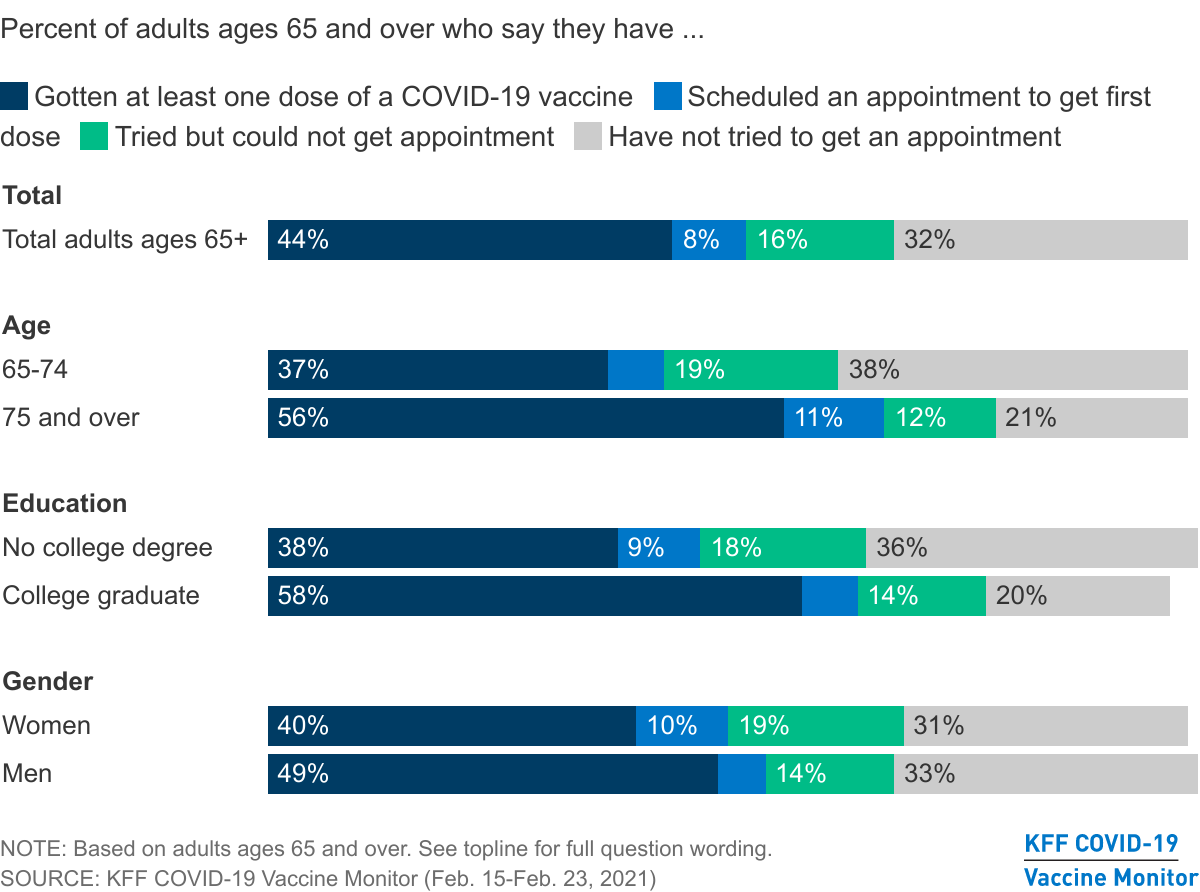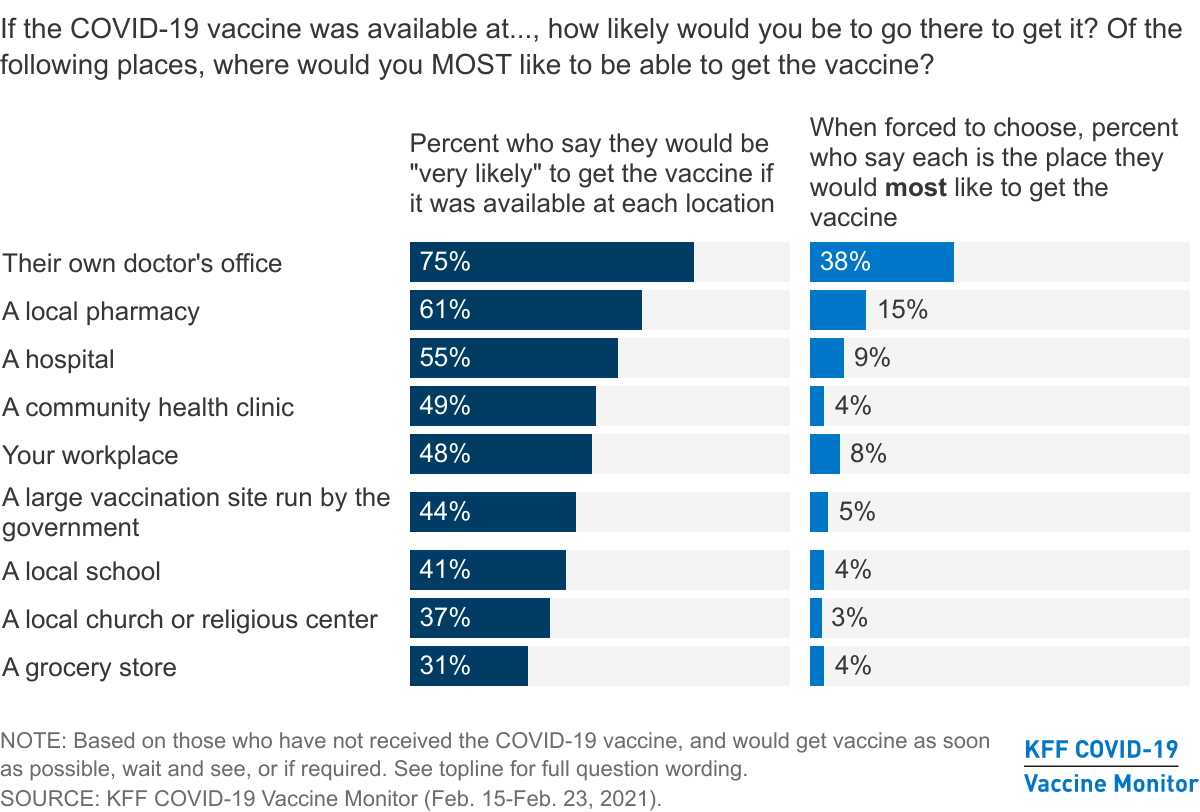While this has been a challenging time, there have also been critical scientific discoveries made, as well as advances in technology – particularly around the speedy development of vaccines. Typically a 10-year process from discovery to public availability, some COVID-19 vaccines took just over two months from gene sequencing to the first human injection. The pace of bringing effective vaccines to market has been astonishing. But now, we are faced with the hurdles of distributing them quickly to the entire population.
Managing Complexity in the COVID-19 Vaccination Process
In the U.S., vaccinations began in mid-December for front-line healthcare workers. At the time of this publication, research shows more than 93 million shots have been given, with an average of just over 2.1 million doses being administered daily.

While actually administering the shot is straightforward, what takes place behind the scenes is far more complex and difficult to manage. In the United States alone, as many as 660 million doses of a vaccine could be needed for a two-dose regimen, according to some estimates. This means providers must keep track of which patients receive which manufacturer’s vaccine, keep track of any adverse reactions, and capture the demographics needed to report the patient’s vaccine eligibility group, all in addition to ensuring that they come back for their second dose. The urgency to get as many people vaccinated as quickly as possible has led to many patients not knowing where to go to get their vaccine, leaving many confused and frustrated.



While many federal organizations are leading the charge to get the vaccines in the hands of healthcare providers, the real work is being done on the local level. Health systems, family practices, and pharmacies play key roles. Despite the fast and furious pace to control the pandemic, they must ensure vaccinations are organized in an orderly fashion, and that all the various steps in the process are tracked.
To efficiently and effectively roll out millions of COVID-19 vaccines, technology is key. EHRs played an essential role in the early days of the pandemic: guiding screening questions, providing travel and exposure guidance, supporting diagnostic testing, and providing access to the latest CDC recommendations. Now, the role of the EHR is even more vital, as this technology serves as the hub for documenting care; is viewed as a critical component to assist providers in staying organized; and ensures patients get the vaccines they need, when they need them.
Given their importance in the fight against COVID-19, providers must ensure their EHRs and related systems are ready to support multiple aspects of vaccination campaigns, from communication with patients to submitting information to vaccination registries.
To ensure a successful roll-out, providers should ensure their EHR supports the vaccination processes:
Interoperability capabilities should exist with vaccine registries, as well as with other EHRs to enable information-sharing among providers. The EHR needs to be able to collect and transmit all data elements required to comply with state and federal guidelines.
Analytics to track prioritization and doses given: Capitalize on your EHR's ability to identify when patients are eligible to receive the COVID vaccine. Administration, communication, and organization is essential for administering vaccines successfully. The tools should include the necessary vaccine codes and information about the Emergency Use Authorization information which must be provided to patients to explain benefits and risks.
Workflow recommendations for greater efficiency and effectiveness: For example, your EHR should provide you with options like scheduling of follow-up appointments so patients return within the needed timeframe to get their second dose. Your EHR should also easily display prior vaccination information to help ensure patients receive the correct vaccine when they return for the second dose.
By confirming your technology stack can handle these tasks now, healthcare providers, health systems, and pharmacists will be well prepared to administer future vaccinations, making the process easier for both staff and patients alike, while also supporting the overall national campaign in preventing COVID-19 infections. Our industry and nation must work together collaboratively to save the lives of millions; EHR technology provides us a great opportunity to succeed in this mission.
 Manual Prescription Pad (Large - Yellow)
Manual Prescription Pad (Large - Yellow)
 Manual Prescription Pad (Large - Pink)
Manual Prescription Pad (Large - Pink)
 Manual Prescription Pads (Bright Orange)
Manual Prescription Pads (Bright Orange)
 Manual Prescription Pads (Light Pink)
Manual Prescription Pads (Light Pink)
 Manual Prescription Pads (Light Yellow)
Manual Prescription Pads (Light Yellow)
 Manual Prescription Pad (Large - Blue)
Manual Prescription Pad (Large - Blue)
The EHR Checklist for Managing Coronavirus Vaccinations
To efficiently and effectively roll out millions of COVID-19 vaccines, technology is key. EHRs played an essential role in the early days of the pandemic: guiding screening questions, providing travel and exposure guidance, supporting diagnostic testing, and providing access to the latest CDC recommendations. Now, the role of the EHR is even more vital, as this technology serves as the hub for documenting care; is viewed as a critical component to assist providers in staying organized; and ensures patients get the vaccines they need, when they need them.
Given their importance in the fight against COVID-19, providers must ensure their EHRs and related systems are ready to support multiple aspects of vaccination campaigns, from communication with patients to submitting information to vaccination registries.
To ensure a successful roll-out, providers should ensure their EHR supports the vaccination processes:
Interoperability capabilities should exist with vaccine registries, as well as with other EHRs to enable information-sharing among providers. The EHR needs to be able to collect and transmit all data elements required to comply with state and federal guidelines.
Analytics to track prioritization and doses given: Capitalize on your EHR's ability to identify when patients are eligible to receive the COVID vaccine. Administration, communication, and organization is essential for administering vaccines successfully. The tools should include the necessary vaccine codes and information about the Emergency Use Authorization information which must be provided to patients to explain benefits and risks.
Workflow recommendations for greater efficiency and effectiveness: For example, your EHR should provide you with options like scheduling of follow-up appointments so patients return within the needed timeframe to get their second dose. Your EHR should also easily display prior vaccination information to help ensure patients receive the correct vaccine when they return for the second dose.
By confirming your technology stack can handle these tasks now, healthcare providers, health systems, and pharmacists will be well prepared to administer future vaccinations, making the process easier for both staff and patients alike, while also supporting the overall national campaign in preventing COVID-19 infections. Our industry and nation must work together collaboratively to save the lives of millions; EHR technology provides us a great opportunity to succeed in this mission.
15% Off Medical Practice Supplies
VIEW ALL
 Manual Prescription Pad (Large - Yellow)
Manual Prescription Pad (Large - Yellow) Manual Prescription Pad (Large - Pink)
Manual Prescription Pad (Large - Pink) Manual Prescription Pads (Bright Orange)
Manual Prescription Pads (Bright Orange) Manual Prescription Pads (Light Pink)
Manual Prescription Pads (Light Pink) Manual Prescription Pads (Light Yellow)
Manual Prescription Pads (Light Yellow) Manual Prescription Pad (Large - Blue)
Manual Prescription Pad (Large - Blue)__________________________________________________
Appointment Reminder Cards
$44.05
15% Off
$56.30
15% Off
$44.05
15% Off
$44.05
15% Off
$56.30
15% Off












No comments:
Post a Comment